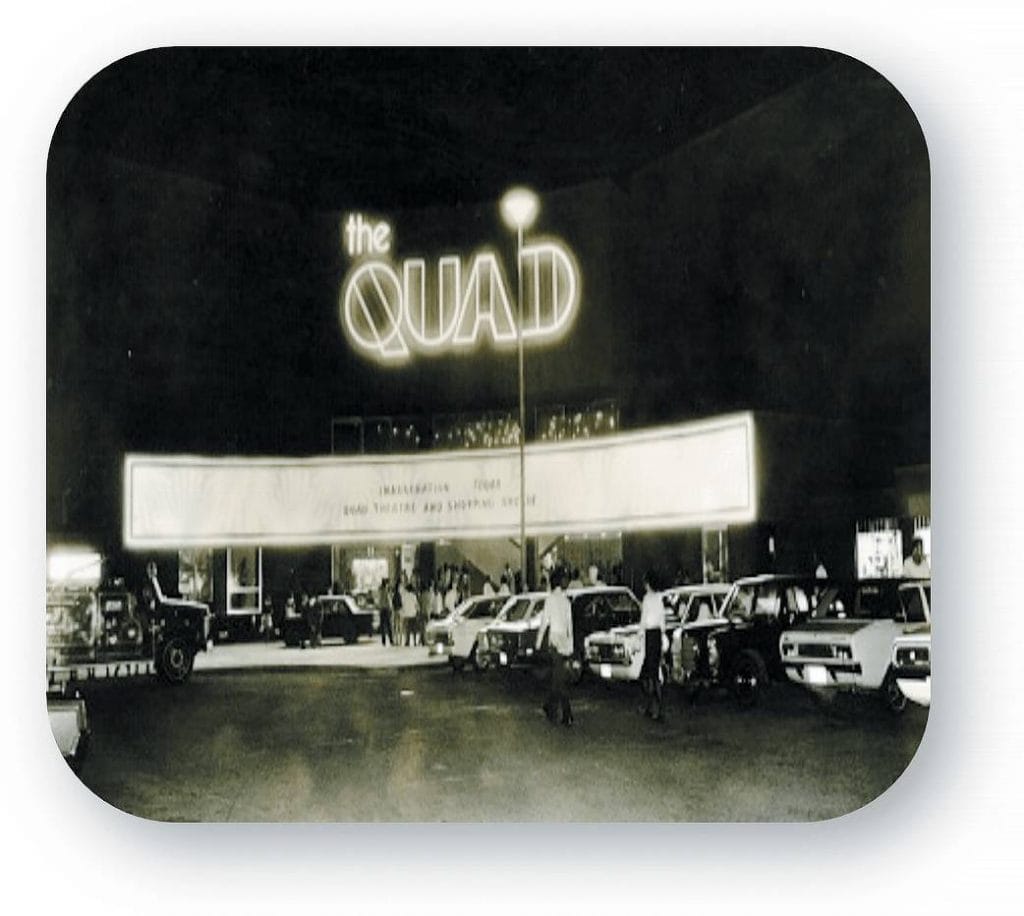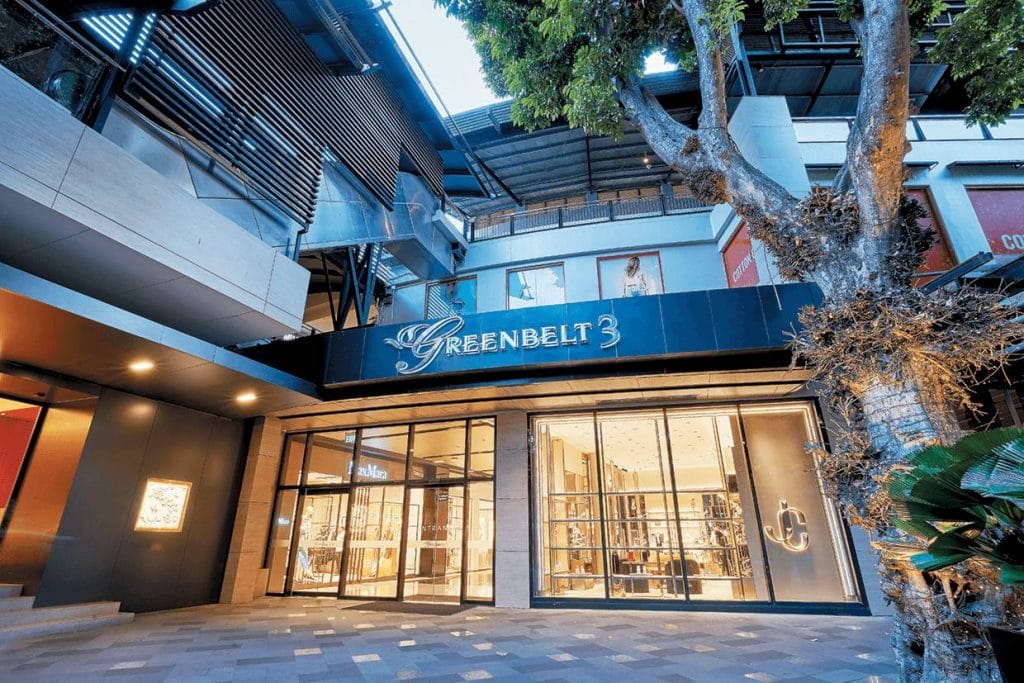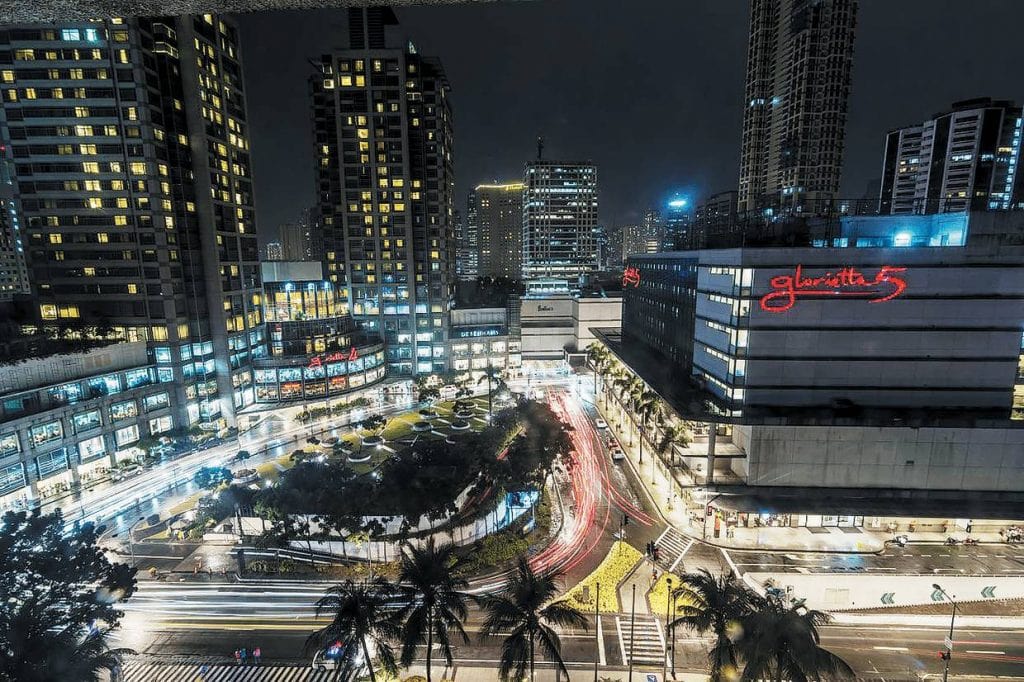With the help of historical photos, one can easily imagine what urban spaces may have looked like in the 60s—sprawling fields of green and grass, trees everywhere, the absence of concrete structures, and probably a stream here and there. It was the same with Makati. Far from the modern metropolis it is today, the Makati business district was primed for development in the late 1950s.
Thus began the story of Ayala Malls, which can be considered the “Mother of Malls” as it was the very first large retail complex that housed a variety of establishments—stores, restaurants, banks, cinemas, and many more. It was known in the 1970s as the Makati Commercial Center (MCC), or Quad.
Through the years, MCC went through many transformations, nurturing the communities around it and evolving strategically to meet the changing needs of its patrons. Like a loving mother, Ayala Malls has always had the best interests of its children at heart. It was constantly innovating so the people who were also its “children” could have the finer things in life, and enjoy these first as milestones were reached in various landscapes like retail, entertainment, leisure, technology, and so on.
From the ‘60s to the ‘80s: How the Mother of Malls was conceived
One of the first structures to be built within MCC was the Rizal Theater, a movie theater designed by the renowned architect and National Artist for Architecture Juan Nakpil. Other establishments that opened during the 1960s included the popular Sulo Restaurant and Makati’s first 5-star hotel, the Hotel Intercontinental Manila.

When the seventies rolled in, commercial establishments started to mushroom in the area. Everybody remembers the Quad Theater, designed by another famous architect, Carlos Arguelles. People trooped to the Quad’s four cinemas, an amusement center, a video game arcade, and various shops. Close to it was a beautifully landscaped park designed by the late National Artist IP Santos and this green space came to be known as Glorietta.
Rustan’s opened its first branch in MCC in the year 1970. Makati Supermarket, Maranaw Arcade, Mayfair Center, Bricktown, Lising’s Commercial, Automatic Center and its sister company Blims, Anson’s, Tesoro’s, and the Manila Garden Hotel (now known as Dusit Thani Manila) were just some of the other establishments that opened here in the 1970s.

Greenbelt, whose construction started in the seventies, is home to Makati’s premier museum, the Ayala Museum, which opened in 1974. Eventually, new features and structures were added to Greenbelt, including an aviary, countless restaurants and retail shops, and a chapel, the Sto. Niño de la Paz Chapel, popularly known as the Greenbelt Chapel. This was finished in 1983 under the expert hands of architects William Fernandez and Jess Dizon, and glass sculptor Ramon Orlina. Even then, AyalaMalls has always given importance to customer mobility, as seen through the Greenbelt Junction, which housed the Love Bus terminal, the era’s answer to transportation challenges of the time.
It was also during the 1980s that AyalaMalls made its presence felt beyond the confines of Makati with the establishment of Twin Cinema Arcade in Alabang, the forerunner of the beloved Alabang Town Center.
The ‘90s up to the present time: Building and nurturing a home for commerce and culture
As the nineties rolled in, the AyalaMalls as we know it today started to take shape. Along with Makati Commercial Center’s name change to Ayala Center came the reinvention of Quad to AyalaMalls’ premier shopping mall – Glorietta.
Glorietta shaped the shopping and malling culture of Filipinos, introducing first-of-its-time concepts such as the Glorietta activity center, multiplex cinemas in the mall, and top global brands such as Hard Rock Café, TGI Fridays, Time Zone, Warner Bros., Music One, and Tower Records.
In southern Metro Manila, the Twin Cinema Arcade evolved into the Alabang Town Center, while Visayas got its first taste of the premier AyalaMalls experience with the opening of Ayala Center Cebu.

AyalaMalls went full steam ahead in the 2000s with the introduction and launch of Greenbelt 2, 3, 4, and 5 – subsequently becoming the only home of many top global luxury brands in the country.
The 2000s was also the decade when AyalaMalls expanded to serve shoppers in key areas in the metro with the opening of Market! Market!, the first retail development in Bonifacio Global City; Bonifacio High Street, the first open-air retail destination in the metro; TriNoma, the first AyalaMall in the Quezon City area; and MarQuee Mall, the first AyalaMall in northern Luzon.
The 2010s saw AyalaMalls further expanding nationwide, with the establishment of AyalaMalls Abreeza in Davao City, AyalaMalls Solenad in Laguna, Harbor Point in Subic, AyalaMalls Centrio in Cagayan de Oro City, Fairview Terraces in Quezon City, and the U.P. Town Center, the first university town center in the country. Recently, AyalaMalls opened its biggest mall to date, AyalaMalls Manila Bay.
More than a mall, it’s a lifestyle experience
Through the years, AyalaMalls sought to bring amazing and unique experiences to every community it serves. AyalaMalls has been the proponent of first-of-its-kind concepts in various aspects of retail.
AyalaMalls was the first to recognize the role of shopping centers in bringing people together to share and create moments, so it introduced the Activity Center in Glorietta as a convergence point where customers can relax, have fun, and be entertained. Before indoor-outdoor integration became popular, AyalaMalls already knew the importance of nature and greenery, and sought to make green parks and open spaces as a main feature in all of its malls. In fact, centuries-old trees are the focal points in several AyalaMalls such as the ones in U.P. Town Center, Fairview Terraces, and AyalaMalls Capitol Central. International concerts and family shows in the malls, which AyalaMalls introduced, brought quality entertainment closer to Filipinos.
True to being a mom, AyalaMalls always brings the best of the best into the country so that its patrons may enjoy the finest global brands and the most amazing experiences. These are a testament to how, as the market evolves and grows, so will every Ayala Mall, serving as modern centers for lifestyle, convenience, and convergence, while enhancing the value of communities around them.
Over the years, it has become a go-to brand where Pinoys can celebrate special occasions and milestones. One such celebration is the upcoming Mother’s Day.
